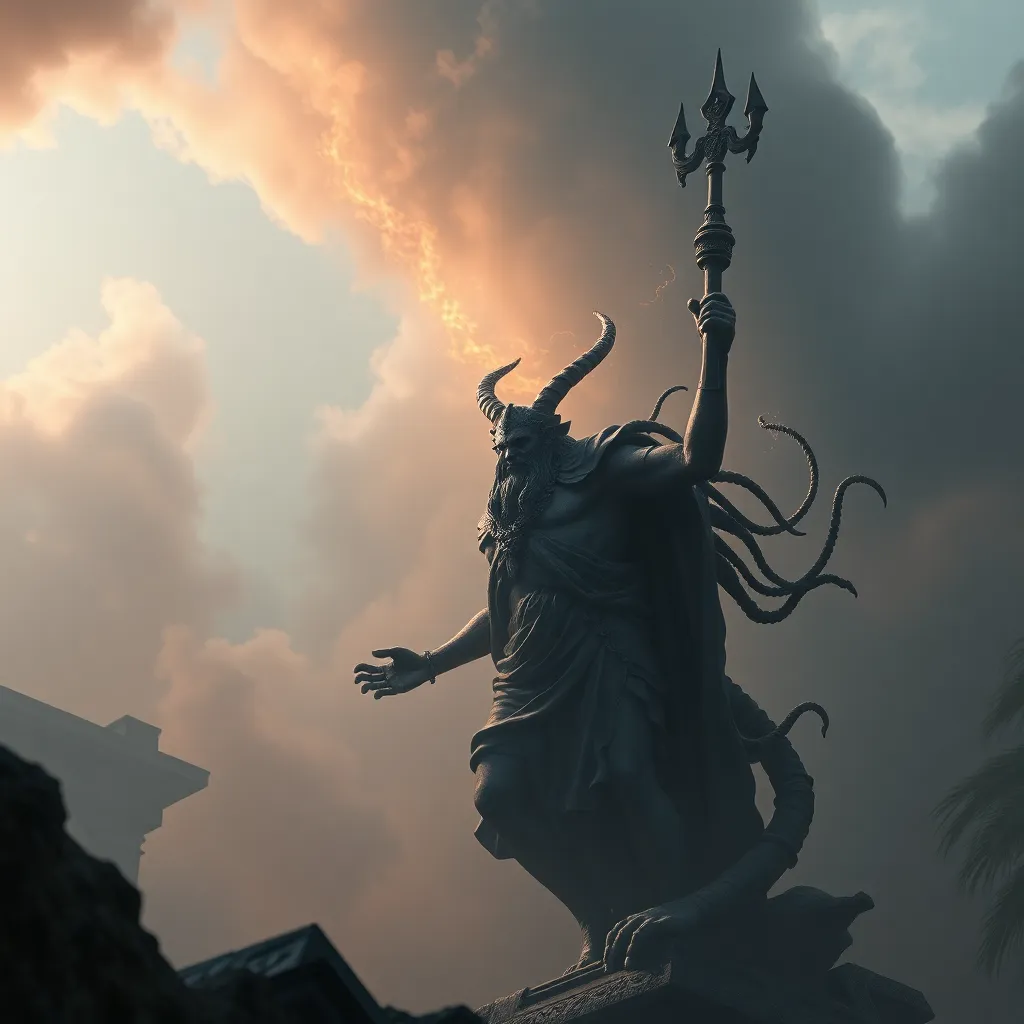Hades: The Misunderstood God of the Underworld in Greek Mythology
I. Introduction
Hades, often referred to as the god of the Underworld in Greek mythology, is a complex figure whose role is frequently misunderstood. While many view him merely as a ruler of the dead, Hades embodies much more than just darkness and death. He holds a significant position within the pantheon of Greek gods, governing the realm of the deceased and overseeing the afterlife.
Common misconceptions about Hades portray him as a villain or a malevolent deity. This article aims to explore Hades’ character, his significance in Greek mythology, and to uncover the layers of his persona that are often overlooked.
II. The Origins of Hades in Greek Mythology
The origins of Hades can be traced back to ancient texts, where he is depicted as one of the three main Olympian gods. He is the son of Cronus and Rhea, making him a brother to Zeus and Poseidon. In the grand scheme of Greek cosmology, the three brothers drew lots to divide the universe among themselves:
- Zeus received the sky and became the king of the gods.
- Poseidon was given dominion over the seas.
- Hades was assigned the Underworld, the realm of the dead.
III. Hades’ Domain: The Underworld
The Underworld, often referred to as Hades, is a complex and multifaceted realm. It is divided into various sections, each serving different functions:
- The Elysian Fields: A blissful place for the virtuous.
- Tartarus: A deep abyss used as a dungeon of torment.
- The Asphodel Meadows: A neutral zone for ordinary souls.
The significance of the Underworld in ancient Greek beliefs cannot be overstated. It was seen as an inevitable part of life, a place where souls would journey after death. Hades’ responsibilities as the ruler of the dead included guiding souls to their final resting places and maintaining order in his realm.
IV. Hades in Mythology: Stories and Symbolism
Hades features prominently in numerous myths, with one of the most famous being the abduction of Persephone. In this story, Hades falls in love with Persephone, the daughter of Demeter, and takes her to the Underworld to be his queen. This myth not only highlights Hades’ role as a ruler but also explores themes of love, loss, and the changing of the seasons.
The symbolism associated with Hades is rich and varied. He represents the duality of life and death, highlighting that death is an essential part of the cycle of existence. Compared to other deities of the underworld in different cultures, such as Osiris in Egyptian mythology or Yama in Hindu beliefs, Hades stands out as a figure who upholds justice and order rather than chaos.
V. Hades’ Character: Misconceptions vs. Reality
In popular culture, Hades is frequently portrayed as a villain, an image perpetuated by films and literature. However, a closer examination reveals a more nuanced character:
- Hades embodies justice, ensuring that souls receive their due based on their actions in life.
- He maintains order in the afterlife, preventing chaos and disorder from overtaking his domain.
- Hades plays a vital role in the cycle of life and death, reminding mortals of their mortality and the inevitability of death.
Understanding Hades in this light allows for a deeper appreciation of his importance in Greek mythology.
VI. The Worship and Cult of Hades
Historically, the worship of Hades was less prominent than that of other gods, primarily due to the fear surrounding death and the afterlife. However, there were practices and offerings dedicated to him, particularly during funerary ceremonies:
- Libations and sacrifices were made to appease Hades and ensure safe passage for the deceased.
- Funeral rites often included rituals aimed at honoring the dead and invoking Hades’ protection.
Hades’ influence can also be seen in ancient Greek art and literature, where he is often depicted alongside symbols of death and the afterlife, such as the cornucopia, which represents abundance, and the cypress tree, a symbol of mourning.
VII. Modern Interpretations of Hades
In contemporary media, Hades has been reimagined in various forms, from films to books to video games. These modern interpretations often blend traditional elements with new storytelling techniques:
- In Disney’s “Hercules,” Hades is portrayed as a comedic villain, diverging from his traditional representation.
- Video games like “Hades” allow players to explore his character in a more interactive and nuanced way.
Over time, there has been a shift in the perception of Hades, moving from a purely negative figure to a more complex character who embodies the inevitability of death and the importance of balance in life.
VIII. Conclusion
In conclusion, Hades is a misunderstood figure whose significance extends far beyond his role as the god of the Underworld. His character reflects the complexities of life, death, and rebirth, challenging the notion of him as a mere villain. Understanding mythological figures like Hades in their context is crucial for appreciating their roles in cultural narratives. As we reflect on Hades’ place in Greek mythology, we are reminded of the intricate tapestry of life and death that he represents, encouraging us to appreciate the multifaceted nature of this essential deity.




